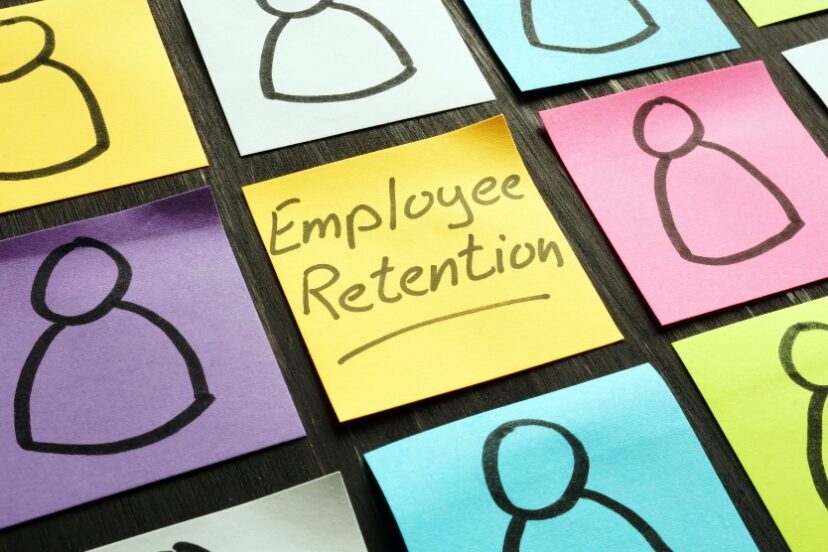Artificial Intelligence (AI) is no longer a futuristic idea—it’s here, shaping industries and changing how businesses…
12 Ways To Improve Employee Retention In A Competitive Job Market

Retaining top talent has never been more crucial or challenging for business owners. With competitive job markets and evolving employee expectations, companies are under increasing pressure to create workplaces where employees feel valued, supported, and motivated to stay.
High turnover rates disrupt daily operations and lead to unexpected costs and lost productivity, directly affecting a business’s bottom line.
Get ready to explore 12 actionable strategies designed to help business owners strengthen employee retention, ensuring their success in building a resilient and loyal workforce.
1)) Offer Competitive Salaries
One of the most effective ways to improve employee retention is to ensure that your salaries are competitive within the industry.
Employees want to feel that their contributions are valued, and compensation plays a significant role in that perception.
Conduct regular market research to stay informed about current salary trends and adjust pay scales accordingly.
Offering fair, competitive wages not only attracts top talent but also fosters loyalty among your current workforce.
When employees see their hard work recognized, they are more likely to remain committed to the organization.
Providing competitive salaries is a key step toward building a stable and satisfied workforce.
2)) Provide Growth Opportunities
Employees are more likely to stay with a company when they see clear paths for growth and development.
Providing opportunities such as training programs, mentorships, and leadership development initiatives demonstrates your commitment to employees’ long-term success.
Internal promotions, skill-building workshops, and support for continuing education can motivate employees to deepen their expertise and expand their responsibilities.
These initiatives not only enhance workforce capabilities but also increase employee satisfaction.
Offering avenues for growth reinforces a sense of purpose and trust, ensuring employees feel invested in the organization’s future.
This approach plays a vital role in fostering a dedicated and motivated team.
3)) Foster A Positive Culture
A positive workplace culture is a crucial factor in retaining employees and fostering long-term commitment.
Establishing open communication, mutual respect, and inclusivity creates an environment where employees feel valued and connected.
Encouraging team collaboration, recognizing achievements, and supporting work-life balance further strengthens morale across the organization.
Ensure your leaders and managers embody the company’s core values, setting the tone for a supportive workplace.
When employees feel genuinely appreciated and aligned with the company culture, they are more likely to stay engaged and loyal.
Building a positive culture is essential to creating a thriving and unified workforce.
4)) Recognize And Reward Achievements
Acknowledging and rewarding employees for their contributions is a powerful way to boost retention and satisfaction.
Regular recognition, whether through verbal praise, team shout-outs, or formal awards, demonstrates that employees’ efforts are noticed and appreciated.
Providing tangible rewards like bonuses, gift cards, or additional benefits further reinforces this sentiment and enhances motivation.
Publicly celebrating milestones and achievements fosters a sense of pride and collaboration among team members.
When employees feel valued and rewarded for their hard work, they become more engaged in their roles and build a stronger connection to the organization.
Recognizing achievements is a critical aspect of maintaining a motivated and loyal workforce.
5)) Support Work-Life Balance
Maintaining a healthy work-life balance is essential for employee well-being and long-term retention.
Employers can support this balance through flexible work schedules, remote work options, and generous paid time off policies.
Encouraging employees to set boundaries between work and personal time helps prevent burnout and promotes overall satisfaction.
Providing resources such as wellness programs, mental health support, and childcare assistance demonstrates a genuine concern for employees’ lives beyond the workplace.
When employees feel that their personal needs and family commitments are respected, they are more likely to remain loyal and productive.
Prioritizing work-life balance is a fundamental step toward sustaining a happy and engaged workforce.
6)) Invest In Employee Training
Investing in employee training is a strategic way to enhance both individual and organizational performance.
Providing comprehensive training programs, whether through workshops, online courses, or hands-on learning opportunities, allows employees to develop new skills and refine existing ones.
These initiatives not only boost confidence and competence but also demonstrate that the organization is committed to their professional growth.
Supporting continuous learning helps employees remain competitive in their roles while preparing them for future challenges and opportunities.
When employees feel empowered and equipped to succeed, they are more likely to remain engaged and loyal.
Prioritizing employee training is essential to cultivating a capable and future-ready workforce.
7)) Encourage Open Communication
Fostering open communication in the workplace is essential to building trust and strengthening relationships across all levels of the organization.
Providing platforms such as regular team meetings, anonymous feedback channels, and one-on-one sessions with managers ensures that employees have the opportunity to express their ideas, concerns, and suggestions.
Promoting transparency in decision-making processes and keeping employees informed about company goals and changes cultivates a sense of inclusion and shared purpose.
Encouraging active listening and constructive dialogue helps resolve conflicts and promotes a collaborative environment.
When employees feel heard and understood, they are more likely to stay committed and contribute to the organization’s success.
Prioritizing open communication is a foundational element of a trusted and cohesive workplace.
8)) Offer Flexible Work Arrangements
Providing flexible work arrangements is an effective way to support employee well-being and productivity.
Allowing options such as remote work, flexible start and end times, or condensed workweeks gives employees greater control over their schedules, enabling them to balance personal and professional responsibilities.
This flexibility not only reduces stress but also helps employees maintain focus and satisfaction in their roles.
Supporting different working styles and needs demonstrates an organization’s commitment to inclusivity and adaptability.
When employees feel trusted to manage their time and work in ways that suit them best, they are more likely to remain loyal and perform at their highest potential.
Prioritizing flexible work arrangements is a crucial step toward fostering a supportive and results-driven culture.
9)) Provide Meaningful Benefits
Providing meaningful benefits is a key factor in attracting and retaining top talent.
Offering comprehensive health insurance, retirement plans, and generous vacation policies ensures that employees feel secure and valued.
Additional perks, such as wellness programs, tuition reimbursement, and professional development allowances, demonstrate a commitment to their personal and professional growth.
Tailored benefits that address diverse needs, like parental leave or mental health support, foster a sense of inclusion and care within the workplace.
When employees see that their employer genuinely prioritizes their well-being and future, they are more likely to remain engaged and loyal.
Prioritizing meaningful benefits is essential to creating a supportive and appealing work environment.
10)) Promote Strong Leadership
Promoting strong leadership is integral to the success and growth of any organization. Effective leaders set clear goals, provide guidance, and inspire their teams to achieve excellence.
They lead with empathy, communicate transparently, and foster an environment of trust and respect.
Investing in leadership development programs and mentoring opportunities ensures that leaders continue to grow and adapt to changing organizational needs.
Strong leadership encourages innovation, motivates employees, and drives collaboration, creating a culture of high performance.
When teams are supported and inspired by capable leaders, they become more engaged and aligned with the organization’s vision.
Prioritizing strong leadership builds a foundation for sustained success and employee satisfaction.
11)) Address Burnout Proactively
Addressing burnout proactively is critical to maintaining a healthy and productive workforce.
Recognizing the signs of burnout early—such as fatigue, reduced motivation, and declining performance—allows organizations to implement targeted interventions.
Encouraging regular breaks, promoting a manageable workload, and fostering a culture that prioritizes work-life balance can significantly reduce stress levels.
Providing access to mental health resources, such as counseling or wellness programs, further demonstrates a commitment to employee well-being.
Open communication channels where employees feel safe discussing challenges also help in identifying and addressing issues before they escalate.
When organizations take steps to actively combat burnout, employees feel supported and are better equipped to thrive.
Prioritizing burnout prevention is essential to sustaining a resilient and energized workforce.
12)) Seek Employee Feedback
Seeking employee feedback is a powerful way to foster engagement and continuous improvement within an organization.
Providing platforms such as surveys, one-on-one meetings, or suggestion boxes allows employees to share their thoughts and ideas openly.
Actively listening to feedback and taking actionable steps based on input demonstrates that the organization values its workforce and is committed to growth.
Encouraging open dialogue not only identifies areas for improvement but also uncovers innovative solutions that may otherwise go unnoticed.
When employees see their voices influencing decisions, they feel empowered and connected to the company’s success.
Prioritizing consistent feedback channels reinforces trust and collaboration across the organization.
Conclusion
For business owners, the principles outlined in this article are essential for building a thriving and resilient organization.
Prioritizing employee well-being, fostering strong leadership, and creating an inclusive and adaptable workplace culture are not just strategies for success—they are investments in your most valuable asset: your people.
By implementing practices that address core employee needs and empower your workforce, you position your business for sustainable growth, enhanced productivity, and long-term loyalty.
The commitment to understanding and supporting your team is the foundation for driving innovation and achieving lasting success in today’s competitive landscape.





